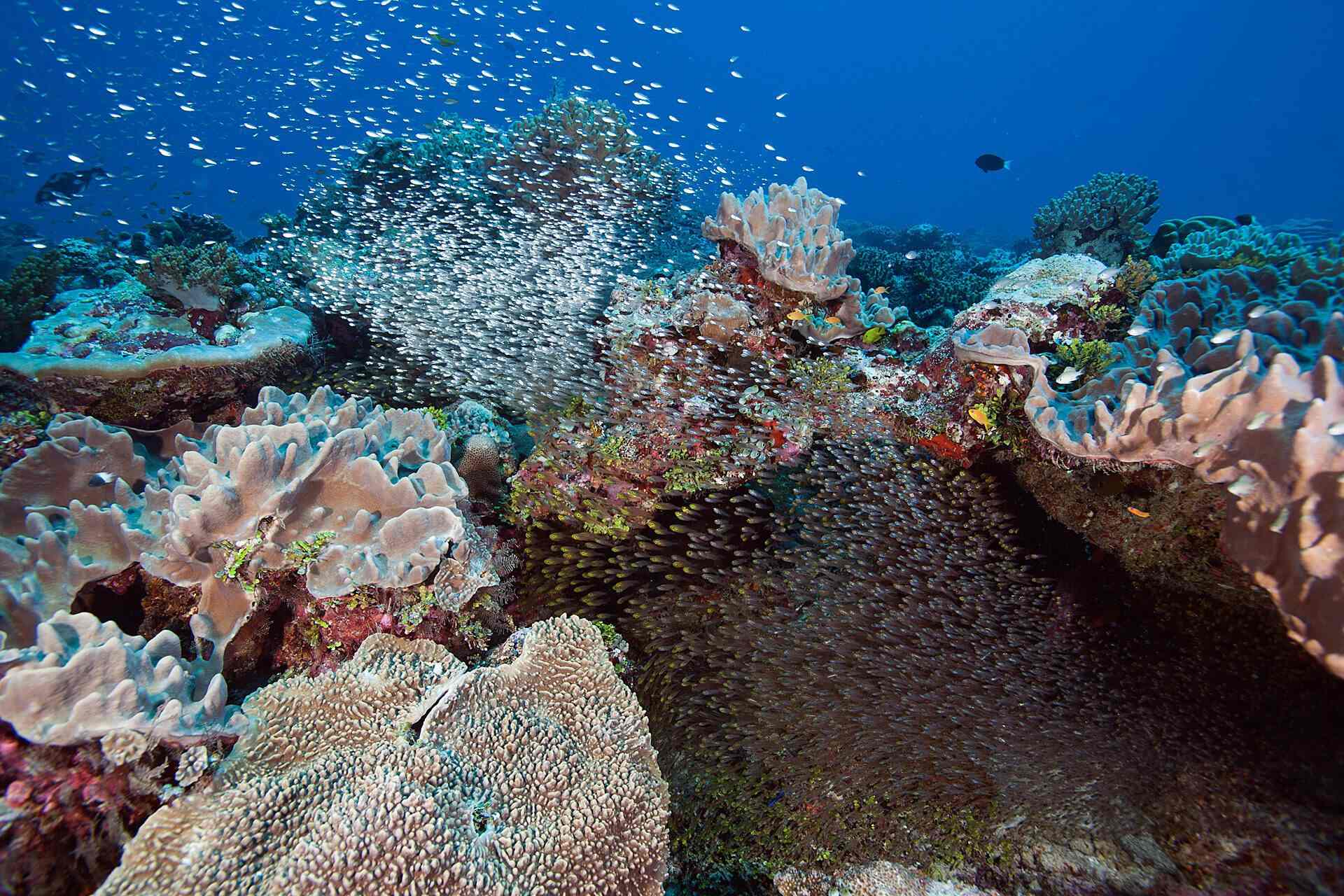
The Great Chagos Bank is a mesmerizing natural wonder located in the Indian Ocean. Spanning over 12,000 square kilometers, it is one of the largest coral atolls in the world. This pristine marine ecosystem is home to an incredible array of marine life, making it a paradise for divers and researchers alike.
In this article, we delve into 8 captivating facts about the Great Chagos Bank that will leave you awestruck. From its breathtaking biodiversity to its fascinating geological formation, we’ll explore the wonders of this underwater kingdom. So, buckle up and prepare to be amazed as we uncover the secrets of the Great Chagos Bank.
Key Takeaways:
- The Great Chagos Bank is a remote and protected marine wonderland, teeming with diverse marine life and breathtaking coral reefs, making it a haven for rare and endangered species.
- Designated as a World Heritage Site, the Great Chagos Bank offers valuable insights into marine ecosystems and holds untapped potential for future scientific discoveries.
Vast and Mysterious: The Great Chagos Bank
The Great Chagos Bank is one of the largest and most mysterious coral atolls in the world. Spanning over 12,000 square kilometers in the Indian Ocean, this natural wonder is teeming with marine life and breathtaking coral reefs.
Remote and Isolated: A Pristine Ecosystem
Situated in the middle of the Indian Ocean, the Great Chagos Bank is remarkably remote and isolated. Its distance from human settlements has helped preserve its pristine ecosystem, making it a haven for rare and endangered species.
Biodiversity Hotspot: A Haven for Marine Life
The Great Chagos Bank is home to an incredible array of marine life. With its crystal-clear waters and abundant food supply, it supports a diverse community of fish, corals, turtles, dolphins, and even whale sharks.
World Heritage Site: A Protected Treasure
In recognition of its outstanding ecological value, the Great Chagos Bank was designated as a World Heritage Site by UNESCO in This prestigious title safeguards its unique ecosystem and ensures its preservation for future generations.
Geological Wonder: A Submerged Atoll
The Great Chagos Bank is actually a submerged atoll, with its highest point located a mere 2 meters below sea level. This fascinating geological feature adds to its allure and makes it a fascinating subject for scientific exploration.
Restricted Access: A Protected Marine Reserve
Due to its remote location and ecological significance, access to the Great Chagos Bank is strictly limited. It is part of the larger Chagos Marine Protected Area, which serves as a sanctuary for marine life and ensures the conservation of this remarkable underwater ecosystem.
Scientific Research Hub: Unlocking Nature’s Secrets
The Great Chagos Bank is a magnet for scientists from around the world. Its pristine condition and diverse marine life offer valuable insights into the functioning of ecosystems and contribute to global climate change research.
Potential for Discovery: Unexplored Depths
Despite already being a treasure trove of natural wonders, the Great Chagos Bank still holds untapped potential for discovery. Its unexplored depths and remote location make it an enticing destination for future explorations and scientific expeditions.
As we delve into the depths of the Indian Ocean, the 8 Captivating Facts About Great Chagos Bank reveal a mesmerizing world of beauty, biodiversity, and scientific intrigue. This remote and protected marine ecosystem continues to captivate our imaginations and reminds us of the vast wonders that lie beneath the surface.
Conclusion
The Great Chagos Bank is truly a remarkable natural wonder of our universe. From its vast size to its diverse marine life, there is no shortage of captivating facts about this incredible underwater ecosystem. Its ecological importance and unique characteristics make it a fascinating subject of study and exploration. Whether you are a marine biologist, a nature enthusiast, or simply someone intrigued by the mysteries of the universe, the Great Chagos Bank offers endless opportunities for discovery and awe. So, dive deep into the depths of this extraordinary marine marvel and uncover the secrets that lie beneath its breathtaking surface.
FAQs
1. How big is the Great Chagos Bank?
The Great Chagos Bank is one of the largest coral atolls in the world, spanning over 12,000 square kilometers. It is an immense underwater structure that stretches across a vast expanse of the Indian Ocean.
2. What makes the Great Chagos Bank ecologically important?
The Great Chagos Bank serves as a crucial habitat for numerous marine species. Its healthy coral reefs support a diverse array of fish, crustaceans, and other marine organisms. It also serves as a migratory pathway for larger marine creatures, such as sharks, whales, and dolphins.
3. Are there any endangered species in the Great Chagos Bank?
Yes, the Great Chagos Bank is home to several endangered species, including hawksbill turtles, green turtles, and coconut crabs. Protecting this unique ecosystem is crucial for the conservation of these threatened animal populations.
4. Can visitors explore the Great Chagos Bank?
Currently, the Great Chagos Bank is highly protected and access is restricted. It is part of the Chagos Marine Protected Area, which is designed to preserve and safeguard the delicate balance of the ecosystem. However, scientific research expeditions are conducted to study and monitor the marine life within this extraordinary area.
5. Is the Great Chagos Bank home to any unique species?
Yes, the Great Chagos Bank is known to house several unique and rare species that are specific to this region. Scientists have discovered new species of fish, coral, and invertebrates during their explorations, highlighting the importance of preserving this remarkable underwater paradise.
Dive deeper into the wonders of our oceans by exploring marine conservation efforts, biodiversity hotspots like Gulf of Mannar Marine National Park, and fascinating coral reef ecosystems. Uncover the secrets of these underwater worlds and learn how you can contribute to protecting them for future generations.
Was this page helpful?
Our commitment to delivering trustworthy and engaging content is at the heart of what we do. Each fact on our site is contributed by real users like you, bringing a wealth of diverse insights and information. To ensure the highest standards of accuracy and reliability, our dedicated editors meticulously review each submission. This process guarantees that the facts we share are not only fascinating but also credible. Trust in our commitment to quality and authenticity as you explore and learn with us.


